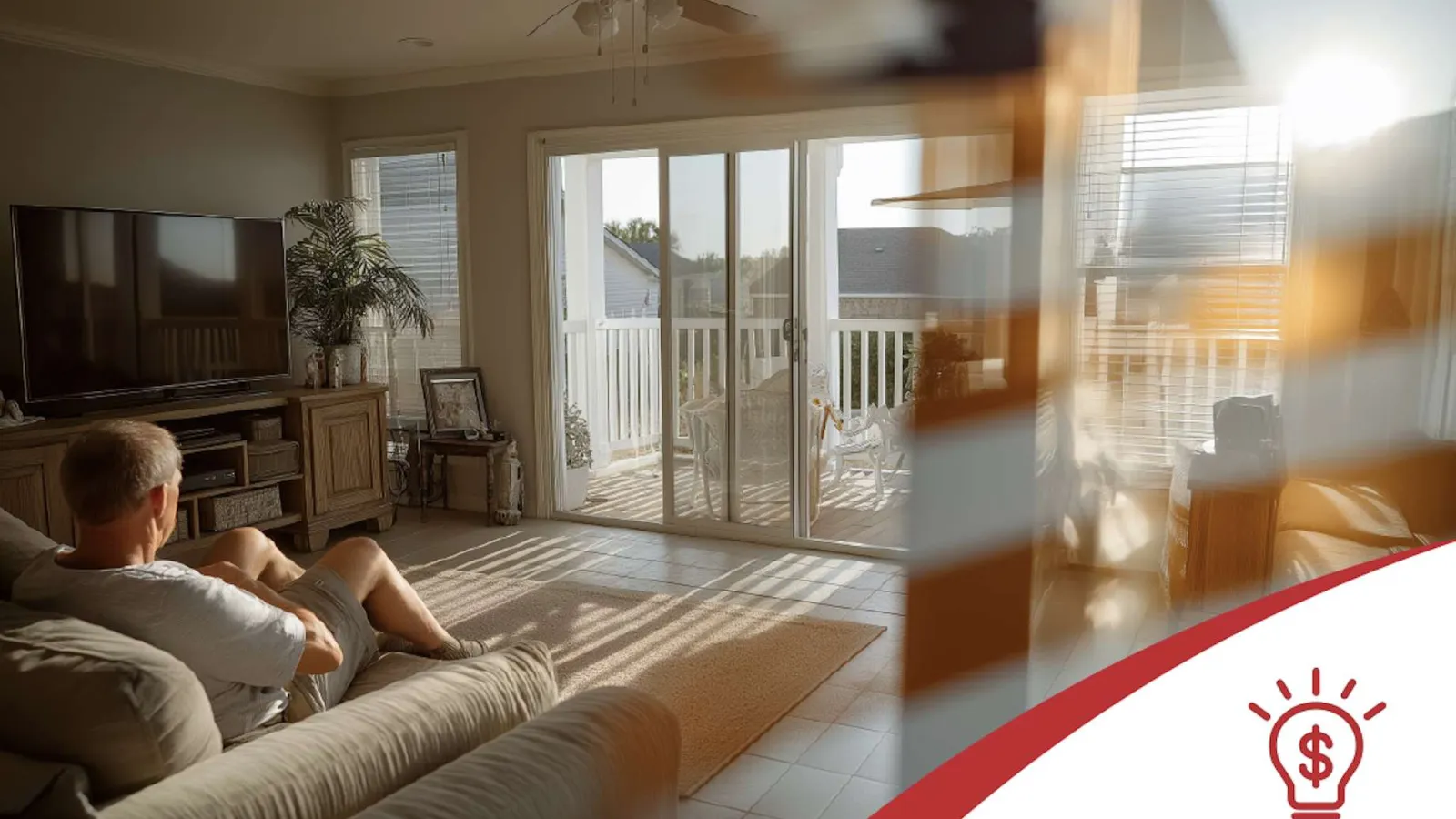R49 Vs. R60 Attic Insulation: What Homeowners Need to Know
Choosing between R49 and R60 attic insulation can feel overwhelming. Both R-values promise excellent thermal performance, but which one actually makes sense for your home? The difference might seem small on paper, but it can impact your energy bills, comfort levels, and installation costs for decades to come.
This guide breaks down everything you need to know about R49 versus R60 insulation, from thickness requirements and material options to climate recommendations and real-world cost savings. Whether you're building new construction or upgrading your existing attic, you'll walk away knowing exactly which R-value fits your situation.
Understanding R-Values: The Basics
R-value measures thermal resistance. The higher the number, the better your insulation resists heat flow. Think of it like a winter coat: R49 is a heavy parka, while R60 is an expedition-grade jacket designed for Arctic conditions.
For attic insulation, R-values determine how effectively your home retains conditioned air. During summer, high R-value insulation prevents outdoor heat from penetrating your living space. In winter, it keeps your heated air from escaping through the roof. This thermal barrier directly translates to lower HVAC costs and more consistent indoor temperatures.
The Department of Energy recommends different R-values based on climate zones. Most regions fall into recommendations ranging from R30 to R60, with R49 and R60 representing the higher end of the spectrum. These premium R-values typically make sense in extreme climates or for homeowners prioritizing maximum energy efficiency.
R49 Insulation: Performance and Applications
R49 insulation provides substantial thermal protection for most American homes. This R-value typically requires 14 to 16 inches of blown-in fiberglass, 13 to 14 inches of blown-in cellulose, or multiple layers of fiberglass batts stacked to achieve the target depth.
According to Energy Star guidelines, R49 meets or exceeds recommendations for zones 4 through 7, which covers the majority of the northern United States. This includes areas with cold winters but not extreme Arctic conditions. Homes in cities like Chicago, Boston, Denver, and Minneapolis often target R49 as their attic insulation baseline.
The key advantages of R49 include proven performance across diverse climates and widespread availability. Most insulation contractors stock materials suitable for R49 applications, and the installation process follows standard procedures. You'll find R49-rated products from major manufacturers like Owens Corning, Johns Manville, and Knauf at home improvement stores.
For practical purposes, R49 delivers significant energy savings compared to older insulation standards. Upgrading from R19 or R30 to R49 can reduce heating and cooling costs by 20 to 30 percent in cold climates. The investment typically pays for itself within 5 to 10 years through lower utility bills.
R60 Insulation: When Maximum Performance Matters
R60 insulation represents the premium tier of attic thermal protection. Achieving R60 requires approximately 17 to 22 inches of blown-in fiberglass, 16 to 18 inches of blown-in cellulose, or carefully layered batt insulation systems. This substantial depth demands adequate attic space and proper installation techniques.
Energy Star specifically recommends R60 for zone 8, which includes Alaska and the coldest regions of the northern United States. However, many energy-conscious homeowners in zones 5 through 7 voluntarily upgrade to R60 for maximum efficiency and long-term value.
The performance difference between R49 and R60 becomes most apparent during extreme temperature swings. That additional R11 of thermal resistance helps maintain stable indoor temperatures when outdoor conditions hit their limits. In practical terms, R60 can reduce heat loss by an additional 5 to 10 percent compared to R49 in the coldest weather.
Certain situations particularly benefit from R60 insulation. Homes with cathedral ceilings, bonus rooms above garages, or living spaces in converted attics gain substantial comfort improvements from the extra R-value. Passive house construction and net-zero energy homes frequently specify R60 or higher to meet their stringent performance requirements.
The main consideration with R60 involves diminishing returns. While the performance improvement over R49 is measurable, the percentage gain decreases as you add more insulation. This economic reality means R60 makes most sense when climate conditions, energy prices, or building performance goals justify the additional investment.
Thickness and Installation Requirements
The physical dimensions of R49 versus R60 insulation create important installation considerations. Standard attic trusses typically provide 9 to 12 inches of vertical space at the eaves, which can restrict insulation depth. Achieving either R49 or R60 often requires building up the attic floor or using raised heel trusses in new construction.
For blown-in insulation, contractors use specialized equipment to achieve consistent depth across the entire attic surface. The installation process for R49 typically takes 4 to 6 hours for an average-sized home, while R60 adds another 1 to 2 hours due to the increased material volume. Proper depth markers ensure the installer achieves the target R-value throughout the space.
Batt insulation requires more labor for either R-value. Installing R49 usually involves laying R30 batts perpendicular to R19 batts already between the ceiling joists. Reaching R60 with batts might require three layers or combining batts with blown-in material. Each layer must fit snugly without compression, as compressed insulation loses R-value.
Ventilation becomes increasingly critical with thicker insulation. Both R49 and R60 applications need adequate soffit and ridge vents to prevent moisture accumulation. The insulation should never block airflow from the soffits, which sometimes requires installing baffles or rafter vents. Proper ventilation protects your roof structure and maintains insulation effectiveness over time.
Cost Comparison: Material and Installation
Material costs for blown-in fiberglass insulation typically range from $1.00 to $1.50 per square foot for R49, compared to $1.30 to $1.80 per square foot for R60. For a 1,500-square-foot attic, expect to pay $1,500 to $2,250 for R49 materials or $1,950 to $2,700 for R60 materials. These prices fluctuate based on local market conditions and material availability.
Professional installation adds $0.75 to $1.50 per square foot to the total project cost. The labor difference between R49 and R60 remains relatively small since the process is similar. However, the additional material handling and installation time for R60 typically adds $200 to $400 to the final invoice for an average attic.
When comparing total project costs, R49 installation generally runs between $2,625 and $5,625 for a 1,500-square-foot attic, while R60 costs approximately $3,038 to $6,300. The 10 to 15 percent price premium for R60 buys you approximately 22 percent more insulating power, which represents good value in extreme climates but diminishing returns in moderate regions.
Energy savings help offset these upfront costs. In climate zone 6, upgrading from R30 to R49 might save $300 to $500 annually on heating and cooling. Jumping from R49 to R60 could add another $75 to $150 in annual savings. These estimates vary significantly based on local energy prices, HVAC efficiency, and home size.
Federal tax credits and utility rebates can improve the cost equation for both R-values. The Inflation Reduction Act offers tax credits for insulation upgrades, while many utilities provide additional incentives for exceeding minimum code requirements. Check with your local utility provider and a tax professional to understand available incentives in your area.
Climate Zones and Regional Recommendations
The United States divides into eight climate zones for building insulation purposes. Zones 1 through 3 cover the southern states, where R30 to R38 typically suffices for attic insulation. Zones 4 and 5 include the mid-Atlantic and lower Midwest, where R38 to R49 represents the standard recommendation.
Zones 6 and 7 encompass the northern tier states where winter temperatures regularly drop below zero. These regions benefit most from the R49 versus R60 decision. Energy Star recommends R49 as the baseline for these zones, but R60 provides meaningful performance improvements for homes in Minnesota, Wisconsin, Michigan, Maine, and similar cold-weather states.
Zone 8 includes only the coldest parts of Alaska and represents the clearest case for R60 insulation. The extreme temperature differentials in these regions make the maximum practical R-value worthwhile. Some builders in zone 8 even exceed R60 when space permits, though diminishing returns accelerate above this level.
Beyond official zone designations, local conditions influence the optimal choice. Homes at high elevations experience colder winters than the broader zone average. Properties in wind-exposed locations or areas with extended periods below zero benefit from the additional protection R60 provides. Conversely, homes in protected valleys or those with southern exposure might perform well with R49.
Energy costs also factor into regional recommendations. Areas with expensive electricity or natural gas see faster payback periods for premium insulation. If your winter heating bills regularly exceed $200 monthly, the additional investment in R60 makes more financial sense than in regions with moderate energy costs.
Energy Efficiency and Long-Term Savings
The energy performance difference between R49 and R60 attic insulation varies by climate and existing conditions. In zone 6, upgrading from uninsulated to R49 might reduce heating costs by 40 to 50 percent. Adding R60 instead of R49 provides an additional 5 to 8 percent improvement, which translates to modest but measurable long-term savings.
These percentages translate differently depending on your home's characteristics. A 2,500-square-foot home in Minneapolis spending $2,400 annually on heating might save $960 by upgrading to R49, plus another $50 to $100 by choosing R60 instead. Over a 30-year period, that additional savings accumulates to $1,500 to $3,000 in today's dollars, not accounting for energy price inflation.
Air sealing dramatically affects insulation performance for both R-values. Even R60 insulation performs poorly if your attic has significant air leakage around fixtures, penetrations, or access hatches. Professional energy auditors recommend sealing air leaks before adding insulation, as this combination delivers the best return on investment.
HVAC system sizing interacts with insulation levels. Homes with R60 attic insulation require smaller heating and cooling equipment than those with R30 or R38. When replacing your HVAC system, the energy savings from reduced equipment size and operation costs can exceed the insulation savings themselves. This synergy makes premium insulation even more attractive during home construction or major renovations.
Material Options for Both R-Values
Blown-in fiberglass remains the most popular choice for achieving R49 or R60 in attics. This material installs quickly, fills irregular spaces effectively, and resists settling better than older loose-fill options. Modern fiberglass products also offer improved fire resistance and contain higher percentages of recycled content than previous generations.
Blown-in cellulose provides similar R-values per inch compared to fiberglass, though it settles more over time. Cellulose contains fire retardants and insect deterrents, which some homeowners prefer for added protection. The material typically costs slightly less than fiberglass but may require periodic top-ups to maintain target R-values as it compresses.
Fiberglass batts work well for new construction where you can plan the installation before closing in the attic. Achieving R49 with batts requires layering different thicknesses, while R60 typically needs three layers or combining batts with blown material. Batts cost less per square foot than blown options but require significantly more installation labor.
Spray foam insulation can achieve R49 or R60 in less space than other materials, providing approximately R6 to R7 per inch. This makes spray foam ideal for tight spaces or cathedral ceilings where blown insulation is impractical. However, spray foam costs two to three times more than fiberglass or cellulose, limiting its use to specific applications where the space savings justify the expense.
Mineral wool (rock wool) offers excellent fire resistance and sound dampening properties along with competitive R-values. While less common for whole-attic applications, mineral wool batts or boards work well for portions of the attic requiring premium fire protection or acoustic control. The material costs more than fiberglass but less than spray foam.
Should You Choose R49 or R60?
For most homeowners in climate zones 4 and 5, R49 provides excellent value and performance. The material costs less than R60, installs in slightly less time, and delivers substantial energy savings compared to older insulation standards. Unless you face extreme weather conditions or have specific performance goals, R49 represents the sweet spot of cost-effectiveness.
Climate zones 6 and 7 present a closer decision. R49 meets Energy Star recommendations and performs well in typical winter conditions. However, R60 offers measurable benefits during the coldest periods and can improve comfort in homes with temperature stability issues. If your budget allows the 10 to 15 percent premium for R60, the long-term benefits often justify the investment in these colder climates.
Zone 8 and specialized applications clearly favor R60. The extreme conditions in Alaska and similar regions make maximum insulation worthwhile. Similarly, passive houses, net-zero homes, and bonus rooms above garages benefit from R60's superior thermal performance regardless of climate zone.
Your home's characteristics influence the decision. Older homes with limited existing insulation see bigger improvements from either R-value. New construction projects can accommodate R60 more easily during the building phase than retrofit applications. Cathedral ceilings and living spaces in converted attics, particularly those located near the roof deck, benefit significantly from R60 insulation.
Taking the Next Step
Proper attic insulation, whether R49 or R60, represents one of the most effective home improvements for energy efficiency and comfort. The investment pays dividends through lower utility bills, more stable indoor temperatures, and reduced strain on your HVAC system. Both R-values significantly outperform older standards and position your home for decades of improved performance.
Ready to upgrade your attic insulation? USA Insulation specializes in professional blown-in and injection foam insulation services that maximize your home's energy efficiency. Our experienced team can assess your current insulation, recommend the optimal R-value for your climate and budget, and complete the installation with minimal disruption to your daily routine.
Contact USA Insulation today for a free insulation evaluation. We'll measure your existing R-value, identify problem areas like air leaks or insufficient coverage, and provide a detailed estimate for bringing your attic up to R49 or R60 standards. Stop wasting money on heating and cooling bills when the solution sits right above your ceiling.



